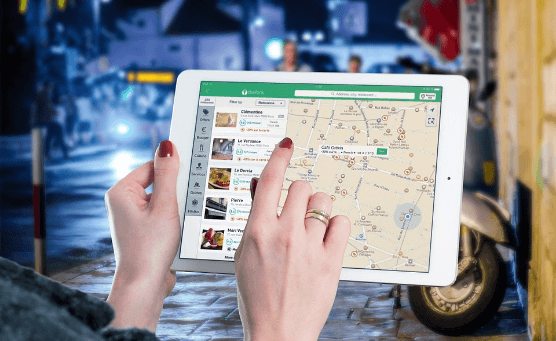Customer Expectation is the New Buzzword For the Travel Industry

Jack Kerouac was a writer and traveller. He dreamt of a backpack revolution many years ago, where average Americans would fan out the length and breadth of their country with nothing more than a backpack. Many years later, miles away, in a different milieu, another age, another country, in India, Jack Kerouac’s dream is being relived like there’s no tomorrow. Yes, India is travelling. Whether it is the overworked executive planning, a quick weekend getaway or family of four migrating to the hills to beat the scorching summers – travelling it is!
How big is the industry in India?
The industry is thriving, notwithstanding the impact of the country’s slowing economy, depreciating rupee and failing airline industry. Stats are inevitable. The World Travel and Tourism Council calculated that tourism generated INR 6.6 Trillion or 6.6% of the nation’s GDP in 2012. Jobs generated 39.5 million. More than 7 million foreign tourists come to our shores every year. Domestic tourists stand at a whopping 850.86 million. Online booking is off the charts.
In 2012 alone, Indians spent $22.1 billion on business travel alone, surpassing Canada to become the 10th largest travel market in the world. With growth rate registering a healthy 5% YOY, the travel industry is poised for great times. Besides providing a ready outlet for our recreational needs, travel generates millions of jobs annually and sustains thousands of ancillary industries spreading across the length and breadth of the country which is a good reason for cheering this industry.
Factors driving growth
India’s rich history, cultural and geographical diversity, besides its many scenic vistas spread across the length and breadth of the country, makes its international tourism appeal large and diverse. India ranks 65th out of 144 countries as per the Travel and Tourism Competitiveness report 2013. Also, India has quite an excellent road and air transport facilities besides an extensive rail network, which makes travelling to distant parts of the country hassle free.
Factors impeding the growth of the Indian Tourism industry
But all is not hunky dory. Any conversation on travelling in India has the habit of veering unerringly to the prickly topic of tour operators and their lack of ethics. They would sell you tour packages to (famous) lakes that had dried up a long time ago or to (wannabe) forts famous for some skirmishes nobody knows much about or to some fictional towns famous for fictional events unreported in history books.
Less said about hotel accommodation the better: dirty rooms; unresponsive staff; rooms smelling of weed; toilets that don’t flush; taps that don’t work; pricy food; tell-tale signs of previous night’s orgies. It is all grin in the first place. Wait until the next day; only to check out before eleven P.M. Cross your fingers. Look for another stay. All this hectic traipsing through one hotel door to another eats into your travelling time, and before you know, it is time to pack your bags and go back to your 9-5 job. Holiday ruined. Rise of the new informed class of travellers
Historically, travel companies in India have been stubborn, giving the short end of the stick to the typical traveller. Short on choices, low on information, the traveller in India is a much-harried lot.
But all of this is changing; thanks to the rise of a new class of information savvy travellers connected to the vast World Wide Web of Information on their smart-phones, tablets and laptops. Thanks to the profusion of information and services on the internet. Today’s customers are more confident in their bargaining position.
a) Changing expectations
As seen from the above discussion the major difficult areas for a typical traveller are –
-
Price – Is my travel agent overcharging me? Is there a group discount? Can I get the same package for less from a different vendor? I hope they don’t shortchange me? Is there a package for a budget traveller like me? Is my travel agent trustworthy? Am I, in the words of my travel agent, getting the best deal out there? Isn’t the wining and dining expensive?
-
Service -Will I be staying in an industry accredited hotel? Will they have clean linen and fresh towels for me? I hope the food is good. Will the itinerary include all the tourist hotspots? What is the best place to wine and dine in this foreign city? What do they have planned for an action junkie like me, or is there something more laid back to sedate me?
b) Managing Expectations
So basically the travel business boils down to managing the many aspirations and expectations of the modern day traveller. And who else will bring it together than the online travel agency?
Online travel booking behaviour follows the following pattern: 1) ideation stage – strong desire for travelling is established; 2) learning phase – logging online for researching various travel destinations; 3) booking phase – buying a customised travel plan from an online travel agency or OTA.
During steps 1, 2 and 3, the buyer may visit multiple websites to gather information needed for stitching together a travel package. Acquiring and retaining customers
The #1 challenge before online travel agents is converting online visitors to customers and hopefully, brand ambassadors. Good SEO brings site visitors and then it is a question of how well businesses can engage visitors coming to their site.
c) Acquiring New Customers
More options
The OTA industry has taken rapid strides since the last time you checked into a budget hotel. It is safer. There are more packages and options. Information is easily accessible. You can easily bypass the services of cut-throat tour operators and touts and all those who are after your money by logging into the net and searching for the deals that suit both your pocket and lifestyle. More information
Today’s travellers suffer from an information overload which is in sharp contrast to travellers belonging to an earlier era suffering from an information deficit which made them an easy game for unscrupulous tour operators. However, this has changed significantly with travel websites providing tour packages complete with the locale and wining & dining information. Most importantly, all this travel information is now available to anyone with an internet connection. Tourists can log into a travel website, check various package deals, compare prices and choose the one package that suits their pocket and lifestyle. Greater accessibility
Consequently, travel companies have had to step up their efforts to make their presence felt in the virtual marketplace. A strong web presence, a database of readable content, 24×7 helpline, WOW level customer experience and much more. Success has boiled down to their ability to hawk their travel agency business online through SEO/SEM/Content campaign and high-quality customer engagement (customer experience) efforts. With smart-phone sales going through websites should be smart-phone compliant.
d) Creating Brand Ambassadors
Words travel. Invite your customers to share their good experience on social media platforms.
e) Retaining Customers
It is easier to maintain than attain new customers, but it is easier said than done. Customers are influenced by positive and negative influences while repurchasing from an OTA. Drivers of positive impact include –
-
Focusing on the overall experience – What is the one thing that is guaranteed to make a traveller irate? It is an OTA that slaps one charge over the other at every turn. Want help with your baggage? Pay Re 500 extra. Want a porter? Pay extra. Travelling should be stress-free. It is supposed to be of quality time. All inclusive deals should be all-inclusive. No extra payments or charges.
-
Manage traveller anxiety when bad things happen – 24/7 Twitter Concierge. Not far fetched at all. Five-star hotels are training customer service reps on how to reply in 140 characters. The 24×7 helpline can go a long way in negating customer’s anxiety before, during and after the trip has taken place.
Monitor Social Media platforms for negative experiences – Respond to criticism on social media platforms immediately before travellers vote with their wallet. Sometimes an apology works better than compensation. However, know when there is a need for compensation. How can Knowlarity help the OTA INDUSTRY?
The secret to building a great travel agency is quality customer engagement. And, to make this happen, all channels of communication have to be open 24×7. However, this is easier said than done, smaller agencies lack the funds or the technical know-how needed for an excellent communication platform.
In this context, one can make a strong case for cloud-based communication platforms. Unlike conventional telephony servers, that are costly and maintenance heavy, cloud-based telephony platforms are affordable and maintenance free as they come on a managed services platform. Some come with their CRM for recording customer details (name, telephone number, first feature) which can be used for ready referencing purposes when the customer calls back on a later date.
Better communications capability invariably leads to the superior customer to business to customer engagement riding on hindrance free exchange of ideas and information. Dynamic call routing, off hours, support, voicemail and callback service provides seamless communications capability to travel agencies.
With large scale travel companies entering the lucrative market in India, domestic companies will have to step up on their customer engagement efforts to stay competitive in the fast developing market. In a market segment where communication is the key, cloud telephony can play a significant role in levelling the playing field between big biz and small biz, providing Fortune 500 type communications to travel operators.
Written By: Admin

